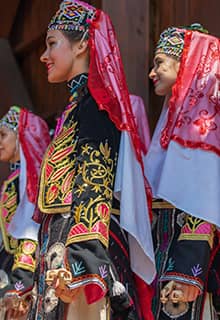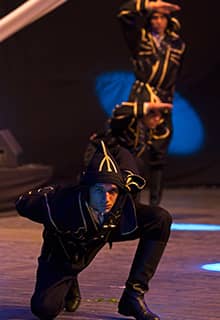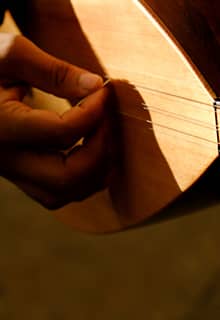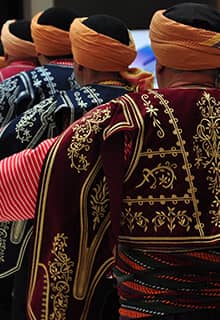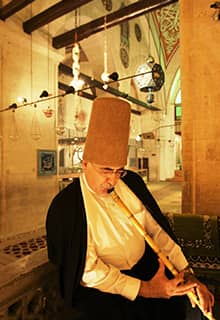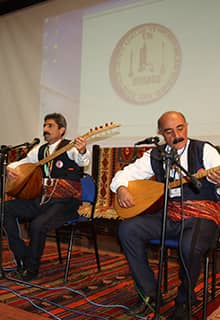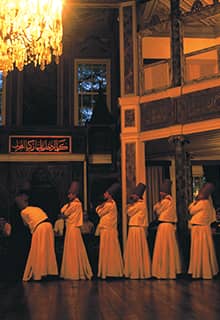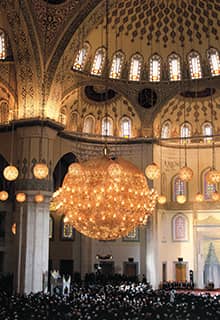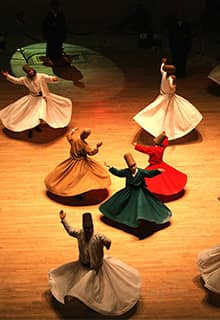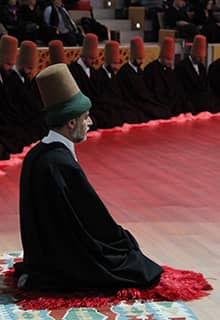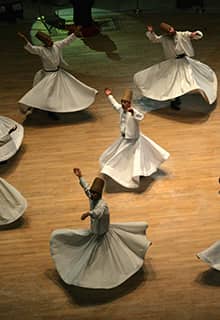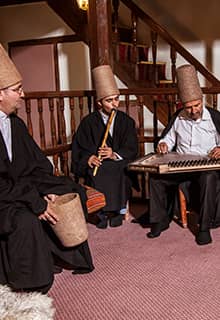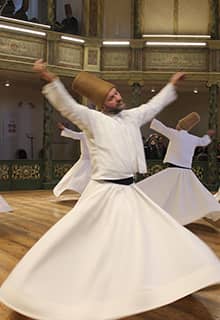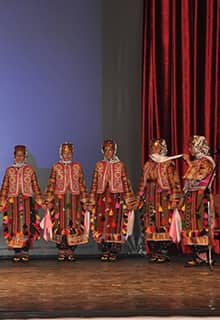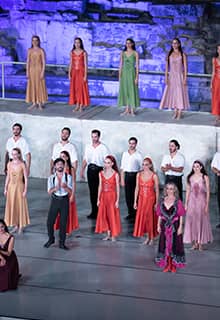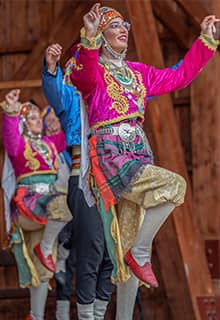

listen
Central Türkiye
Kapuzbaşı Waterfalls, Kayseri
The Kapuzbaşı Waterfalls are in the village of Kapuzbaşı, about 80 kilometers from the center of the Yahyalı district of Kayseri and are within the Aladağlar National Park. The most remarkable feature of the waterfalls is that they pour out directly from the source.
The waterfalls promise to refresh visitors with their calm waters on hot summer days. It's fascinating to see seven separate waterfalls flowing from the slopes of the mountain. There are hiking trails and picnic areas around the waterfalls where you can rest and enjoy the soothing effect of flowing water.
Yerköprü Waterfall in Konya
Yerköprü Waterfall, located on the Göksu River, which flows through Konya in the Central Anatolia region of Türkiye and towards the Mediterranean Sea, descends from a height of 20 meters. The water from the waterfall flows through the city of Mersin and into the Mediterranean Sea. If you visit this waterfall in spring, you can witness the rejuvenation of nature.
Don’t forget to buy fresh fruit from the villagers’ stands around the waterfall!
Sızır Waterfall and Dipsiz Göl Waterfall in Sivas
Sızır Waterfall, located in the Gemerek district of Sivas, awaits visitors who wish to admire the beauty of nature. The waterfall is located on the Göksu Stream, one of the tributaries of the Kızılırmak River, and is also called “Göksu Waterfall.” There are lovely restaurants and teahouses around the waterfall with fantastic views.
Dipsiz Göl Waterfall in the Doğanşar district of Sivas is located approximately 82 kilometers from the city center of Sivas. The waterfall gets its name from the fact that the depth of the lake in the area is unknown - in Turkish, “Dipsiz Göl” means “the lake without a floor.” Dipsiz Göl Waterfall has a height of 50 meters. In the surrounding, you can find areas to camp, trekking and hiking.
Mevlevi Sema Ceremony in Konya
Mevlevi Sema Ceremony is a mystical ceremony with religious elements, themes and detailed rules. The Sema Ceremony is performed with traditional Mevlevi music in places where the Mevlevi culture can be accurately conveyed. Mevlevi Sema Ceremony is on the Representative List of the Intangible Cultural Heritage of Humanity since 2008.
The Mevlevi culture is an ascetic Sufi order founded in 1273 in Konya, from where it gradually spread throughout the Ottoman Empire. Today, it can be found in many Turkish communities throughout the world, but the most active and famous center of the order’s activity is in Konya.
The Mevlevi culture is renowned for their Whirling Dervishes. Everything rotates in the universe. The Earth and the planets revolve around itself and around the sun, like the electrons in the atoms, the rotation of blood in the body, the return of living things from the earth to the earth. For this reason, Mevlevi Dervishes whirl with the love of God.
The Local Dance (Seymen) in Ankara
The seymen outfit is a traditional style of male clothing which evokes what was worn by the local militias in Türkiye’s War of Independence (1919-1922) .It is characterised by baggy trousers tucked into boots with a blouson covered by a tight patterned jacket and a cummerbund into which was tucked a pistol or dagger and topped by a turban-style headdress. Today, wearing seymen clothes on national holidays has become a tradition in Anatolia, especially in Ankara and other provinces of the Central Anatolia Region. The traditional seymen dance, also associated with the city of Ankara, is known as misket.
Nasreddin Hodja Birth Festivals in Eskişehir
Nasreddin Hodja, one of the philosophers of Turkish-Islamic Culture, a great luminary and humorous master, was born in 1208 in Hortu Village of Sivrihisar district of Eskişehir, now called Nasreddin Hodja Neighborhood.
Nasreddin Hodja is a folk philosopher who has become a part of our national culture. He is known and loved in the Turkic World, in the Islamic world. He is known as Molla Nasreddin in Azerbaijan, Koja Nasreddin in Kazakhstan and Nasreddin Efendi in Uzbekistan.
Nasreddin Hodja, who presents a solid worldview in all of his anecdotes, is a legend of the people. He is constructive, not destructive. First, he makes people laugh and then think. There is wisdom in every word. Every phase of daily life takes place in his anecdotes. Nasreddin Hodja is the symbol of the Turkish nation's sense of humor and intelligence.
Nasreddin Hodja Festivals are held every year between June 3-10.
Keskin’s Folk Dances with “Davul” & “Zurna” in Kırıkkale
Inherited from “abdal” culture, and especially performed in feasts and weddings, Kırşehir and Keskin regions’ folk dances accompanied by drum & zurna (traditional double-reed woodwind instrument) offer a seamless experience to its audience. The special halay dance called slow halay, contrarily to other Anatolian halays, has a very slow rhythm and a particular philosophy.
Yaran Talks in Çankırı
Yaran, which is the most important value in the socio-economic and socio-cultural structure of the province, is a community established by 24 tradesmen. It is an Ahi community tradition.
Yaren meetings are held in winter, where others are invited to join. These meetings have also a conservatory function due to the protection of folkloric music and theatre.

